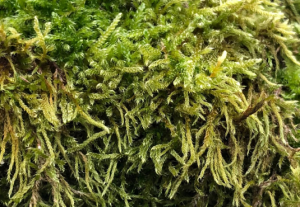New plant species in Antarctica
What is a moss?
- Mosses are non-flowering plants which produce spores and have stems and leaves, but don’t have true roots.

- Instead of roots they have rhizoids, which are small hairlike structures. Their main function is anchoring the plant to rock, bark or soil.
- Mosses, and their cousins liverworts and hornworts, are classified as Bryophyta (bryophytes) in the plant kingdom.
- Composed of 15,000 – 25,000 species, they occur on every continent and in every ecosystem habitable by plants that use sunlight for energy.
- They help to soak up rainfall, maintain moisture in the soil below and keep conditions around them humid. This enables other plants around them to thrive, such as in habitats like marshes and woodland.
Indian Antarctic Program
- The Indian Antarctic expeditions began in 1981. The first trip consisted of a team of 21 scientists and support staff led by Dr SZ Qasim. (40th Anniversary in 2021)
- After a humble beginning, the Indian Antarctic programme has now been credited to have built three permanent research base stations in Antarctica—named Dakshin Gangotri, Maitri, and Bharati.
- As of today, India has two operational research stations in Antarctica named Maitri and Bharati.
- The National Centre for Polar and Ocean Research (NCPOR), Goa, manages the entire Indian Antarctic program.
- The Antarctic region provides an excellent opportunity for conducting scientific research for the benefit of all mankind. It happens to be one of the most pristine laboratories of world-wide significance.
- Antarctic Regions hold an important place while answering the key questions about global climate change such as contribution towards global sea – level, the background aerosol properties, variability in the sea ice cover and phenomena like Antarctic haze and Ozone concentrations. Attempts to address some of these issues has helped mitigating on some important problems concerning human life and well-being.
Bharati Station

- It is India’s 2nd operational research station in Antarctica after Maitri.
- It was started in 2012 to facilitate year-round scientific research activity by the Indian Antarctic program.
Why in the news?
- Scientists at Bharati Station have discovered a new moss species.
- The scientists have named the species ‘Bryum Bharatiensis’ as a tribute to goddess Saraswati, who is also known as ‘Bharati’. It was found near Bharati Station.
- This moss mainly grew in areas where penguins breed in large numbers.
- Penguin poop has nitrogen and plants need nitrogen along with potassium, phosphorus, sunlight and water to survive.
- The discovery is significant for the Indian Antarctic Mission as it is the first and only plant species that the mission discovered since 1981.
References:
Subscribe
Login
0 Comments
